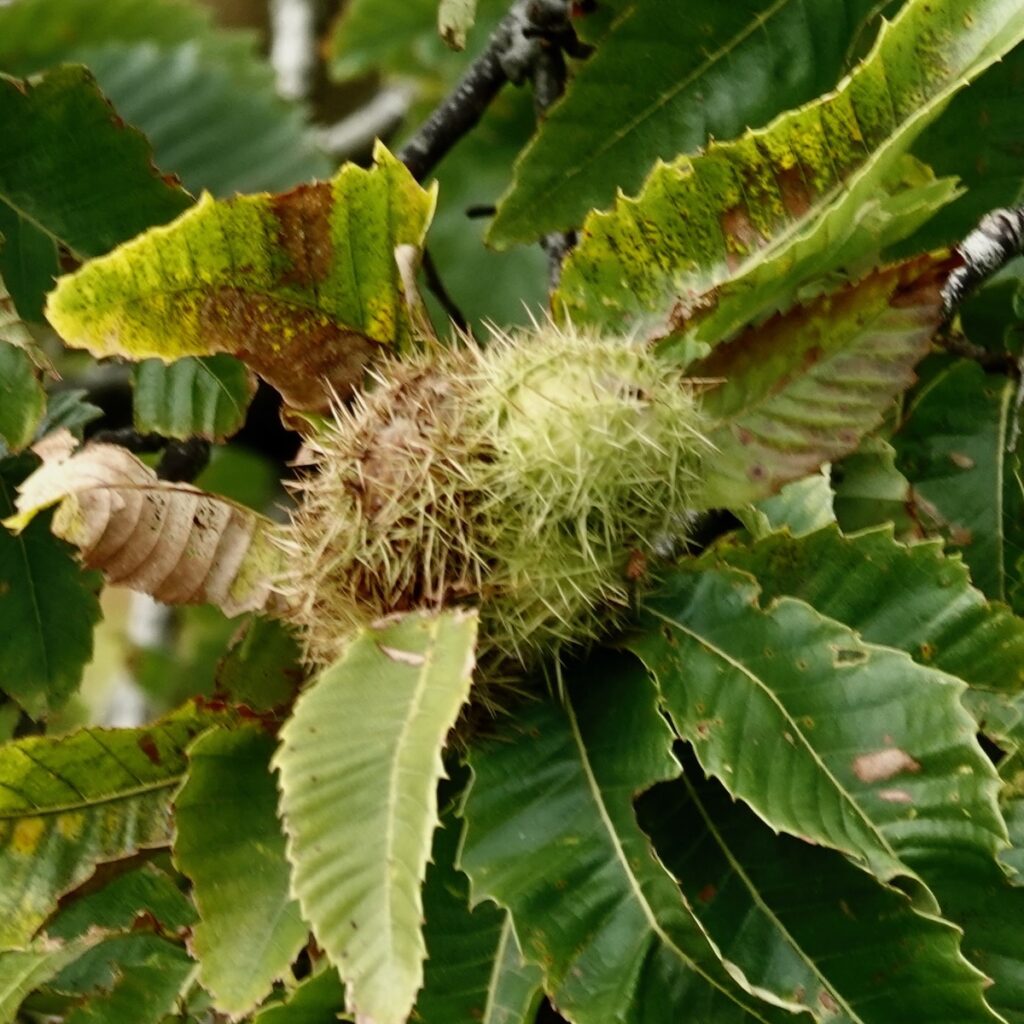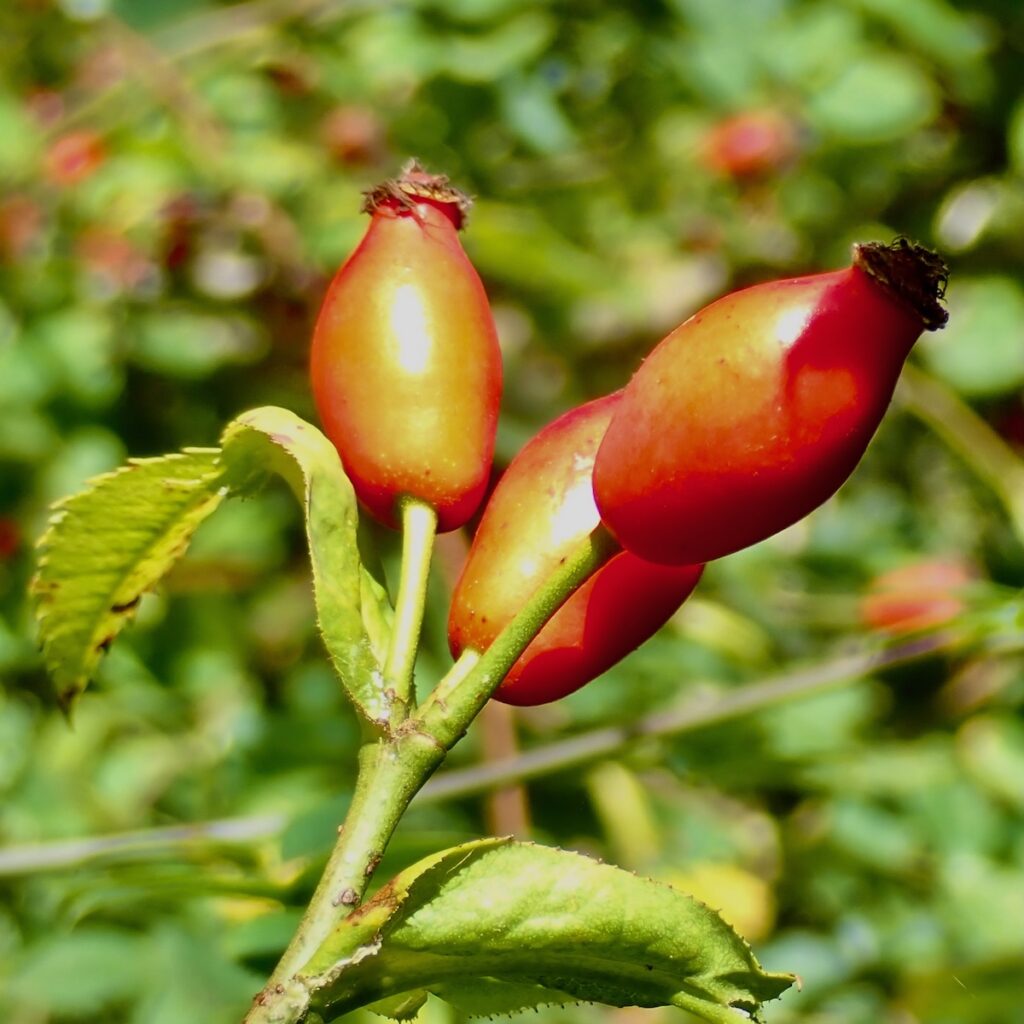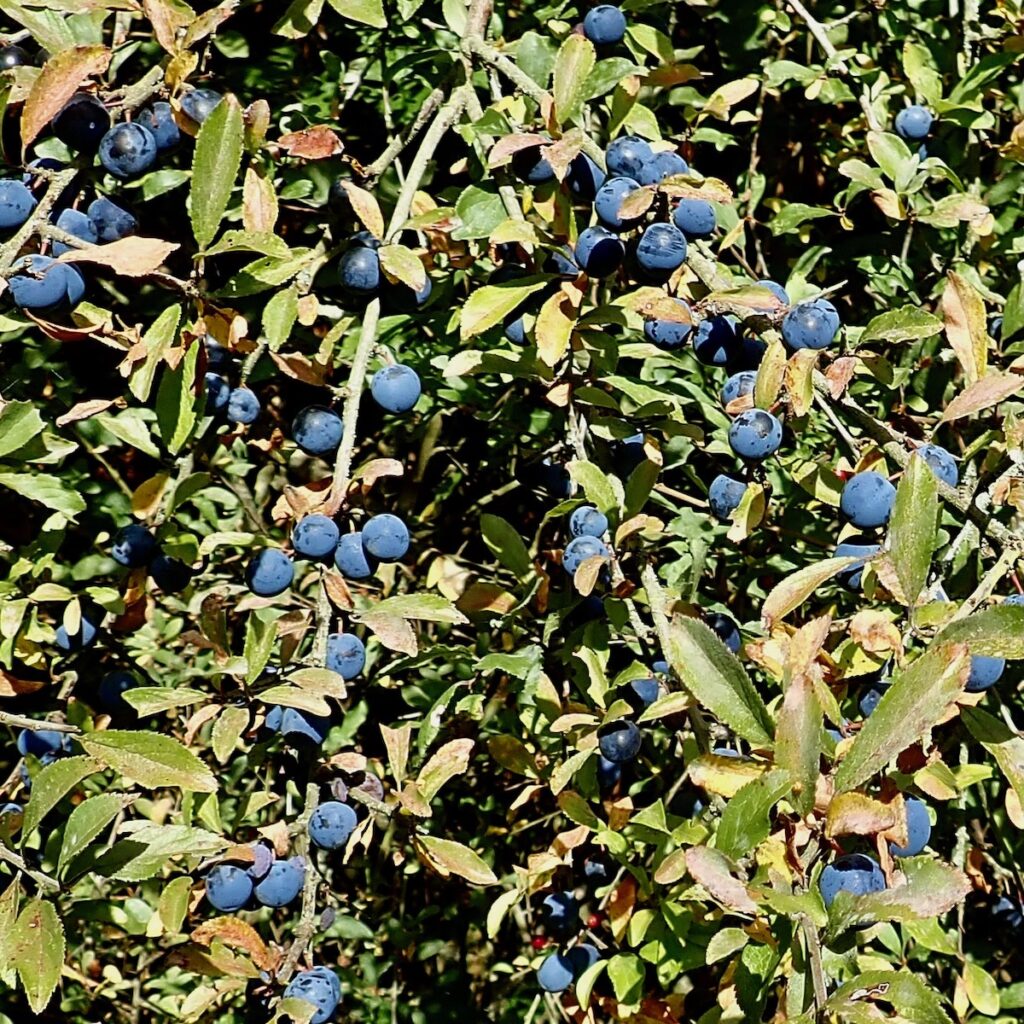Those of you with fruit trees in your garden probably will have noticed a bumper harvest this year – certainly our apples and plums have been more abundant this year than for a long time. Anyone who has been out and about on our local footpaths, parks and nature reserves will have seen that most of our wild fruits are also prolific. This known as a Mast Year, when trees and shrubs produce an unusual abundance of fruits, nuts and seeds. This produces a bumper crop of vital food for wildlife and traditionally also for domestic pigs; these participate in ‘pannage’ which is the practice of allowing them to forage for the fallen mast (particularly beech mast) to fatten them for winter. Mast years occur every few years with some trees producing mast cyclically whilst others are largely influenced by long, hot summer days.


Oak trees vary considerably from year to year in the number of acorns they produce; last year there were few acorns around, but this year they are thickly carpeting the areas around most of our Oaks. This is thought to be an example of predator satiation. When the trees produce smaller crops in successive years animals such as jays, badgers, mice and squirrels that feed on acorns suffer a reduction in population numbers. When this is followed by a mast year there are fewer of these animals to eat the acorns, resulting in a larger proportion germinating. Our other nut trees such as Sweet Chestnut, Hazel and Horse Chestnut follow similar cycles.


The mast year and the hot dry summer have combined this year to produce an abundance of soft fruits in our hedgerows as well. Hips and Haws have traditionally been foraged by both humans and wild animals. Hips are the bright red of orange fruit of wild roses that wind their way through our hedges – these are packed with antioxidants and vitamins and contain up to 20 times more vitamin C than oranges. Haws are the fruit of the Hawthorn, probably our commonest hedgerow plant – the small, dark red berries are rather dry, so they are not usually eaten raw by humans although they can be used as a base for ketchups and jams.


One of the most remarkable sights this year has been the abundance of Sloes, the fruit of the Blackthorn. Although they are often present in hedgerows, they are usually much less noticeable than Hawthorn – this year is different, with the attractive dark purple/grey berries being seen in abundance. They are very astringent, appearing to suck all of the moisture out of your mouth, so the commonest use of Sloes is in the production of Sloe Gin. One other source of berries that seems to be particularly prolific this year is the Spindle Tree. This small, native tree is fairly common, but is often unnoticed until the striking pink-and-orange fruits appear at this time of the year. The leaves also turn a brilliant orange in the autumn. The wood is hard and straight and was traditionally used to make spindles for spinning wool, hence the name. Although the berries provide welcome food for birds, the berries and leaves are poisonous for humans and should never be eaten. It is essential to make sure you can identify the plants and get confirmation that they are harmless.
Now is the best time to get out foraging for wild food in our hedgerows, fields and woodlands. Foraging for food has been a way of life for as long as humans have been around and the delicious nuts and berries are something to look forward to (whilst being careful to avoid the poisonous and less savoury examples). In addition to those mentioned above, Elderberries, Blackberries (from brambles) and Hazelnuts make a healthy and tasty snack. However, we should always bear in mind that much of our native wildlife relies on these wild foods so it is always best to take a small amount and leave most for those who have no access to alternative food sources. We will shortly be experiencing the migration of small birds from the continent, such as Redwing, Fieldfare and Waxwing, who come here to take advantage of our wild fruits when the berries in their homelands are covered with snow. Best to share, I think.
© The Journal 2023